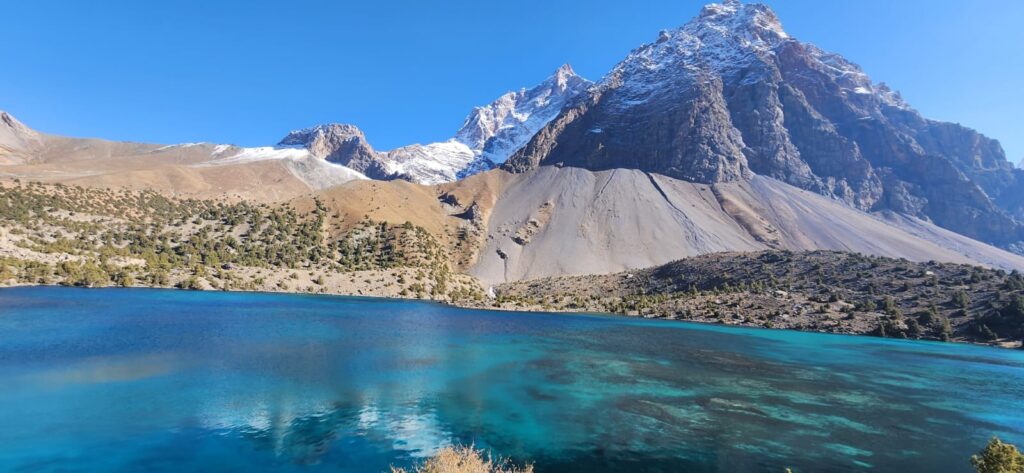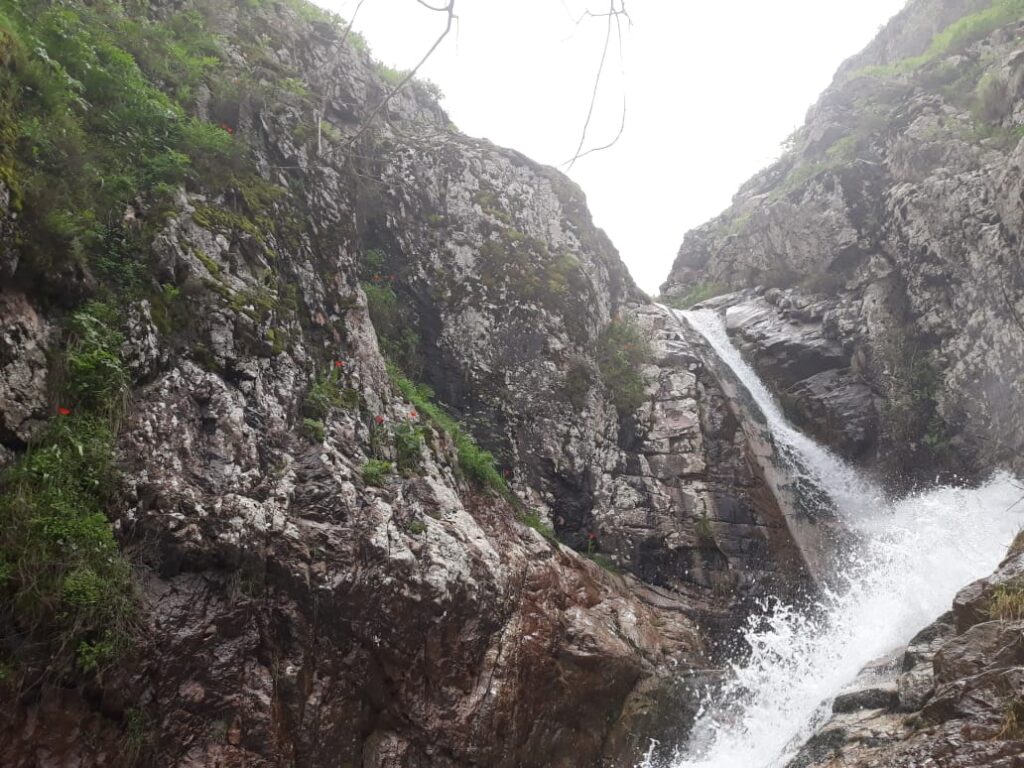In many Tajik villages, the sound of water is inseparable from women’s daily lives. At dawn, before the heat rises, women walk to canals, springs, or village taps with buckets and plastic containers, chatting softly as they queue. Later, they return to wash clothes at stream edges, irrigate kitchen gardens, or clean tools. These scenes are so common they risk becoming invisible, moreover, they reveal a geography of labor shaped by water access, landscape, and gender roles. In Tajikistan’s varied terrains, from fertile lowlands to remote mountain valleys, the geography of water determines who works, how far, and under what conditions.
Water in Tajikistan is abundant at its source but uneven in its distribution. Meltwater from the Pamirs and Tien Shan feeds major rivers like the Vakhsh and Panj, yet much of the population lives far from reliable piped water systems. Irrigation networks, inherited from Soviet planning, were designed primarily for agriculture, not domestic use. In rural areas, especially, households rely on canals, springs, and hand-dug wells. These sources reflect geographic conditions: alluvial fans support shallow wells; mountain slopes provide springs; canals follow topography downstream from reservoirs. In each case, the physical landscape organizes how water is accessed and in turn, how labor is distributed within households.
Gendered geographies of water emerge not only from cultural norms but from the physical distance, terrain, and reliability of water sources. Geography sets the stage; social practices fill in the roles.
Women’s work is most visible along canals and springs. In Khatlon’s lowlands, where canals crisscross cotton and wheat fields, women often walk several hundred meters to collect water for domestic uses. In some villages, taps were installed during Soviet times but have fallen into disrepair. In mountainous regions like Rasht or Gorno-Badakhshan, springs emerge at higher elevations, requiring steep climbs to fill containers. A 2017 household survey found that in many villages, women and girls spend between one and three hours daily fetching water, with distances averaging 0.7–1.5 km each way (ADB, 2014). These distances are not trivial: they shape daily schedules, limit time for other activities, and expose women to weather extremes.
Quoting a woman from a village near Kulob: “The spring is good water, but in winter the path is icy. We go slowly so we don’t fall. If the pipe freezes, we must break the ice with sticks.” Her description reveals the intimate intersection of terrain, season, and labor. These are not just domestic chores- they are navigations of landscape under changing conditions.
Irrigation work also falls heavily on women, particularly in dehkan farms (smallholder plots) that depend on manual canal management. Diverting water into garden plots requires physically opening and closing earthen gates, maintaining channels, and timing irrigation turns precisely. Women often coordinate watering schedules with neighbors, negotiating access to scarce flows. In areas with unreliable water delivery, this may involve night-time irrigation or waiting for upstream users to finish. Physical geography seen in gravity-fed canals, uneven terrain- means these tasks can be physically demanding, requiring walking long distances between intake points and fields.
Water systems designed for fields, not homes, embed extra labor into daily routines. When taps break and canals leak, women absorb the inefficiencies through their time and bodies.
Seasonality adds another layer. Spring snowmelt brings abundant water to canals, but summer droughts or upstream diversions can leave downstream users dry. In these periods, women often walk farther to secondary sources or spend more time waiting at springs. In mountain regions, frozen pipes in winter require digging through snow or fetching water from rivers. The rhythms of water availability follow climatic and hydrological cycles, but their consequences are borne unevenly.
The Soviet-era water infrastructure that remains in use was planned under assumptions of centralized maintenance and abundant labor. Since the 1990s, budget constraints and institutional changes have eroded maintenance regimes. Rural water user associations focus mainly on irrigation, not domestic supply. This gap has gendered effects: when systems degrade, women compensate through increased labor. In some villages, women have formed informal groups to clean canals or repair simple structures, demonstrating both agency and structural constraints (Khodjaev, 2009).
Technological changes can shift these geographies, but not always evenly. In some communities, donor-funded projects have installed new village taps or improved spring catchments. Where these work reliably, they reduce labor time and improve hygiene. But if maintenance lapses or tariffs are unaffordable, systems fall back into disrepair. In other places, wealthier households invest in small pumps or storage tanks, reducing their dependence on communal sources. This creates disparities within villages, where geography interacts with socio-economic status to shape water access.
Climate change is gradually altering these dynamics. Earlier snowmelt and more variable flows affect spring reliability and canal timing. In some mountain villages, springs that once flowed year-round now dry up earlier in summer, forcing women to walk farther or store water in advance (Sorg et al., 2012). Downstream users face reduced canal flows during peak irrigation season, increasing competition and waiting times. These changes are subtle but cumulative, amplifying existing inequalities in labor distribution.
A development worker in Khatlon observed: “When water is far, it is the women who walk. When systems break, it is the women who adapt. Geography decides the distance; society decides who covers it.”
Standing at a spring on a steep hillside in Rasht, a group of women fill buckets while chatting. They balance them on their hips, start the descent slowly, then pick up pace along the well-worn path. This daily movement has shaped trails through the landscape, visible from afar as faint lines etched into the slope. These paths are physical records of gendered labor, written into terrain through repetition over decades. Geography does not only structure access; it remembers it.
References
- ADB (Asian Development Bank). (2014). Tajikistan: Rural water supply and sanitation sector assessment, strategy, and road map. Manila: ADB.
- Khodjaev, K. (2009). Gender roles and water management in Central Asia. In S. Faysse & M. Kuper (Eds.), Gender and irrigation in Central Asia. IWMI.
- Sorg, A., Bolch, T., Stoffel, M., Solomina, O., & Beniston, M. (2012). Climate change impacts on glaciers and runoff in Central Asia. Nature Climate Change, 2(10), 725–731.








